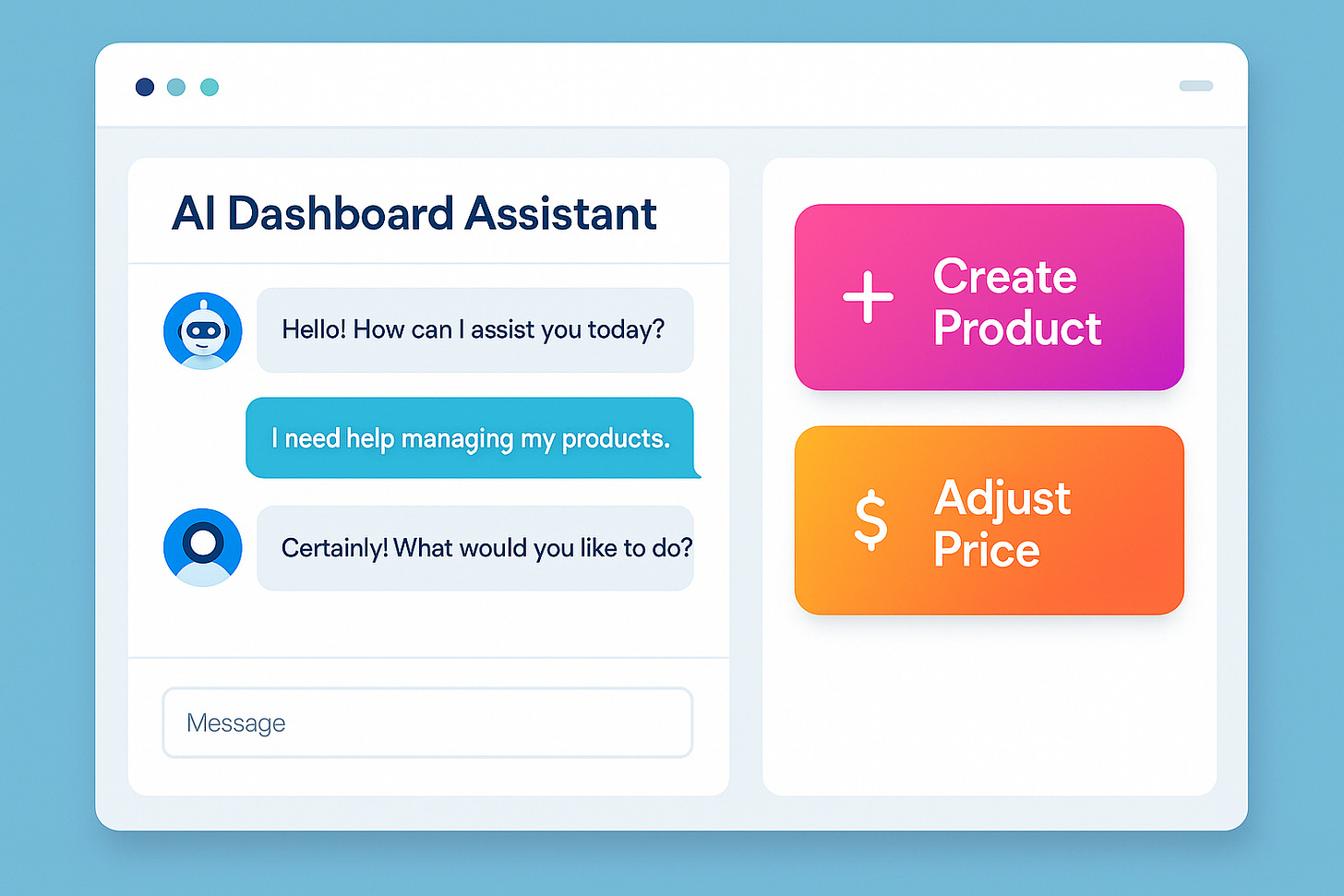The Dawn of a New Era: The AI-Driven World of Product Design
I’ve been thinking a lot about how our digital experiences are evolving, and let me tell you, we’re definitely on the brink of an AI revolution in product design.
Riding the AI Wave in Product Innovation
When I first encountered Stripe’s “little critter” AI Dashboard Assistant at Stripe Sessions, I knew we were looking at something far beyond your average chatbot. This new assistant is a whole new way of interacting with apps, handling product creation, price tweaking, and even billing inquiries through a smart conversational interface.
This breakthrough is a fundamental shift in design philosophy. Traditional, static user interfaces are giving way to fluid, personalized experiences that speak directly to users.
Why Conversational UX Is the Future
I firmly believe that as we grow accustomed to natural, conversational interactions, clunky, rigid screens will soon seem archaic. Picture a world where every product or service feels as intuitive as having a chat with a friend who knows your every need. Modern design is evolving to embrace AI-powered assistants that not only help but also anticipate your desires.
I recently dove into an insightful article on evolving UX trends in the digital age. That study underlines how complex interactions are becoming simpler and more human-like, pushing product teams to reimagine everything from the ground up.
Stripe’s Bold New Experiment
Stripe’s unveiling of its AI Dashboard Assistant is a brilliant example of this transformation. Over the past few months, I have witnessed a gradual but significant shift toward AI that simplifies tasks and personalizes them in a way that feels almost magical.
The idea that you can spin up products or adjust pricing with a few chat commands is truly revolutionary, and it’s a trend that I predict will become standard across platforms in the near future.
There’s a palpable energy in the community when innovative solutions like these surface, and I can’t help but get excited about what’s coming next. It feels like we’re rewriting the rules of engagement.
Beyond Stripe: A Glimpse into AI-Powered World
Beyond Stripe, I’ve been tracking over 20 brand-new AI-powered features introduced by industry heavyweights. Whether it’s Google Meet’s prompt-driven background generator in Meet or Tinder’s conversational matchmaker, these innovations are blurring the lines between interactive assistants and full-blown digital agents. It’s fascinating to see how companies like ElevenLabs and Yelp are improving customer engagement with voice-activated bots.
In my view, these examples illustrate that the AI transformation is multi-faceted, impacting everything from aesthetics to functionality. Each implementation adds a unique touch that can redefine user expectations.
Mapping Out the Future of AI Assistants
I’m excited by the challenge that lies ahead for product teams everywhere: to not just keep up with the AI trend but to be at the forefront of it. It’s about more than adding a fancy chatbot; it’s about creating experiences that adapt to the user’s context in real time. This requires a shift in mindset from static interactions to a dynamic dialogue, where every user input can trigger a cascade of intelligent responses.
One of my favorite resources on this subject is a detailed framework for spotting impactful AI features that truly move the needle. This type of deep dive has inspired me to reimagine my own projects, thinking critically about how to incorporate AI in ways that genuinely enhance the user journey.
Transforming Product Design, One Conversation at a Time
Let’s talk about the tangible effects on product design. In a landscape where every interaction counts, an AI assistant that speaks in natural language can make all the difference. I’ve started to see products not as static applications, but as dynamic partners that guide users through increasingly complex tasks.
This evolution is also about engagement—products that allow users to interact naturally tend to keep users locked in, whereas rigid interfaces can make users feel like they’re constantly fighting the system.
The Bold Moves of Industry Giants
As I reflect on various technological breakthroughs, I can’t help but draw parallels with the world of high finance and the daring strategies of investors like Bill Ackman. I’ve been fascinated by Ackman’s blend of financial genius and bold activism for years. Despite mixed performances over the past few years, his ability to shake up established norms in companies like Canadian Pacific, Chipotle, and Starbucks remains a lesson in out-of-the-box thinking.
The real magic in Ackman’s approach is his focus on “simple, predictable, free-cash-flow businesses” that are traded below intrinsic value. His concentrated portfolio isn’t about quantity but about quality, forcing me to reconsider how sometimes saying less really means achieving more.
Lessons from a Master of the Game
I’ve always been curious about what drives such high-profile success, and Ackman’s strategies provide plenty of thought-provoking insights. He isn’t afraid to take risks—like his infamous COVID short that raked in millions during the dark days of 2020—even if his methods sometimes raise eyebrows. This willingness to step out of the comfort zone resonates with me, as I believe that real breakthroughs often require a bit of risk.
What’s particularly instructive is his insistence on backing only those companies with durable moats and strong financial footing. It’s a reminder that regardless of the field—even one as innovative as AI—the fundamentals of strategy and quality control remain unchanged.
Drawing Parallels: From AI to High Finance
Whether we’re discussing AI-driven product design or high-stakes investment moves, a common theme emerges: the quest for adaptability and robust performance. Just as AI assistants are transforming the way products interact with users, investors are reshaping markets by betting on concentrated, quality-driven portfolios. Both arenas demand a mix of innovation, precision, and sometimes a dash of audacity.
It’s these connections that fuel my passion for exploring new ideas. I’m not just a spectator but a firm believer that cross-disciplinary insights can spark unprecedented progress in our own projects.



